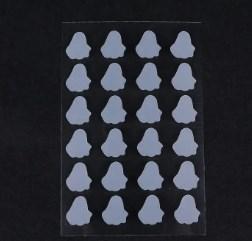The question of whether Pimple Scar Patches are suitable for all skin types is a common concern among individuals seeking to diminish the appearance of acne scars. The efficacy and safety of these patches can vary depending on the unique characteristics of an individual's skin. In this comprehensive analysis, we will explore the adaptability of Pimple Scar Patches to different skin types and the factors that influence their suitability.
Firstly, it is essential to understand the composition of Pimple Scar Patches. These patches are typically made from materials such as silicone, hydrocolloid, or a combination of both, designed to create a moist environment that promotes healing and reduces the appearance of scars. The hydrating and occlusive properties of these materials are generally well-tolerated by most skin types, including sensitive skin.
However, the universality of Pimple Scar Patches is not without its limitations. For individuals with oily skin, the occlusive nature of some patches may lead to increased oil production and potential breakouts. In such cases, it is crucial to select patches with breathable materials that allow the skin to breathe while still providing the necessary moisture for healing.
On the other hand, those with dry skin may find Pimple Scar Patches particularly beneficial due to their hydrating properties. The moisture-retaining capacity of these patches can help alleviate dryness and flakiness, creating an optimal environment for scar healing.
Sensitive skin presents another set of considerations. Some Pimple Scar Patches may contain ingredients that could cause irritation or allergic reactions in sensitive skin. Individuals with sensitive skin need to opt for hypoallergenic and fragrance-free patches to minimize the risk of adverse reactions.
The application of Pimple Scar Patches also plays a role in their suitability across different skin types. Proper application, which includes cleaning the area thoroughly and allowing it to dry before applying the patch, is crucial for optimal adhesion and effectiveness. For those with rough or uneven skin textures, ensuring the patch adheres smoothly and securely may require additional care.
Moreover, the duration of use is another factor that can affect the suitability of Pimple Scar Patches for different skin types. While some may benefit from continuous wear, others may need to alternate between wearing the patches and allowing the skin to breathe, especially if there is a risk of irritation or infection.
In conclusion, while Pimple Scar Patches offer a promising solution for scar management, their suitability is not one-size-fits-all. The unique characteristics of an individual's skin, including its type, sensitivity, and condition, must be taken into account when selecting and using these patches. By understanding these factors and choosing the appropriate patches for one's skin, individuals can maximize the benefits of Pimple Scar Patches and work towards achieving a smoother, less scarred complexion.


